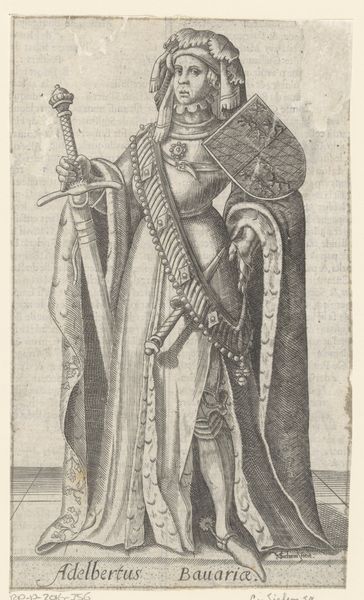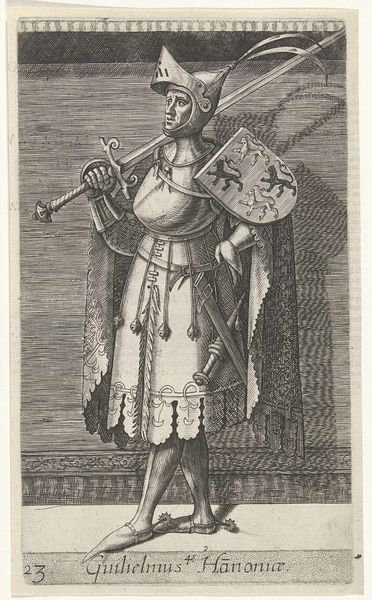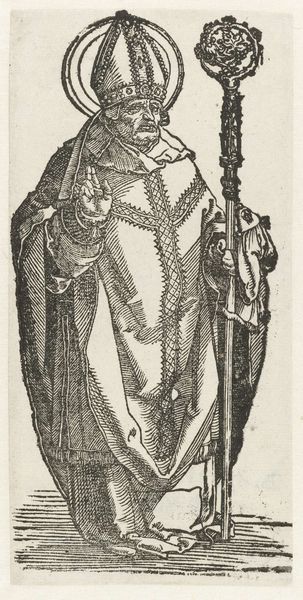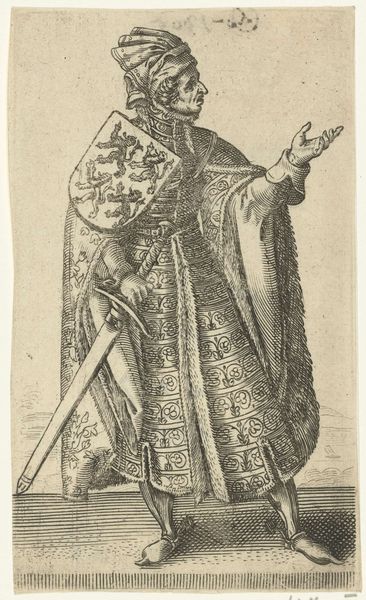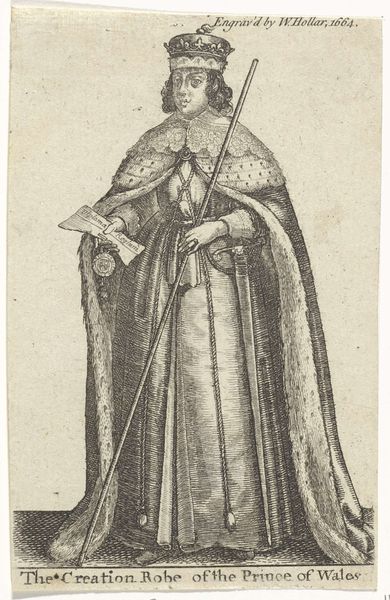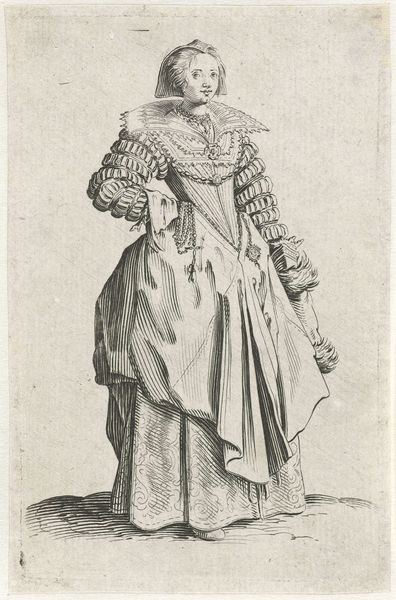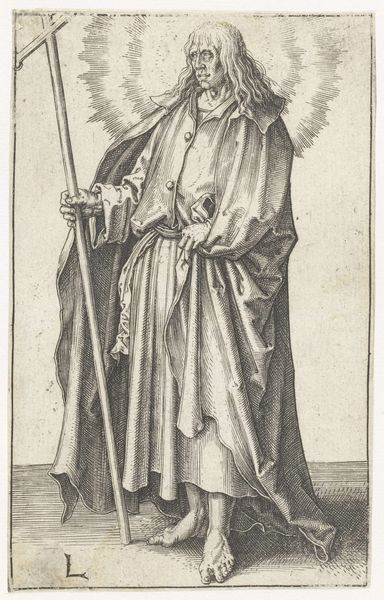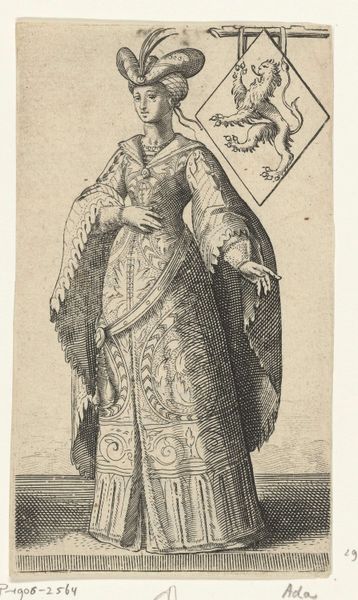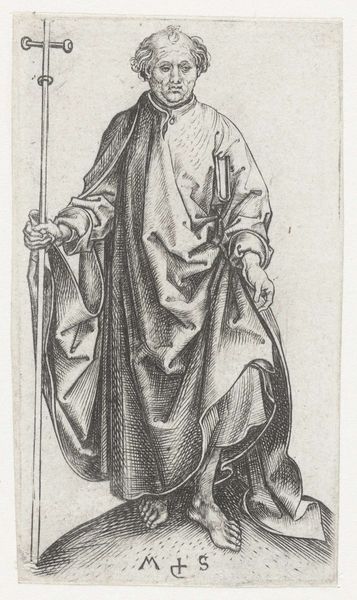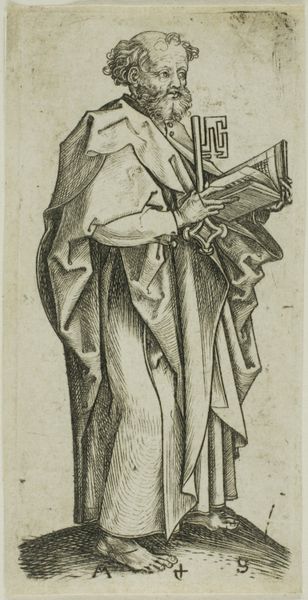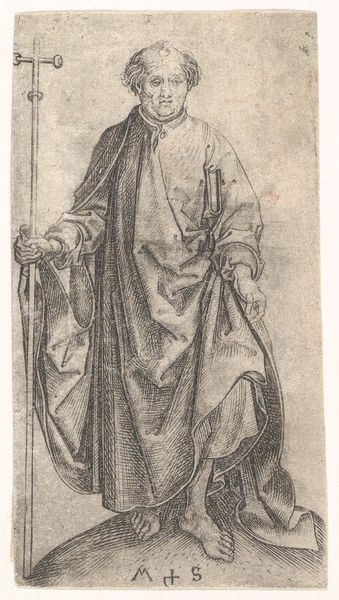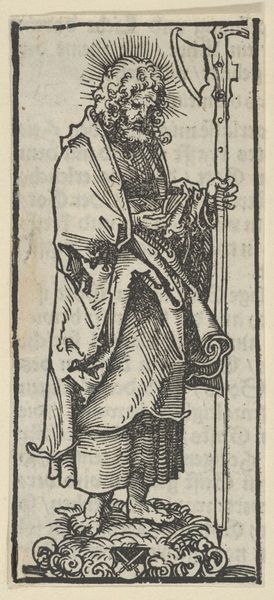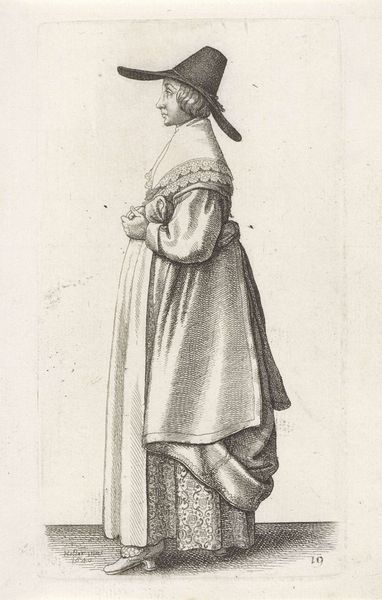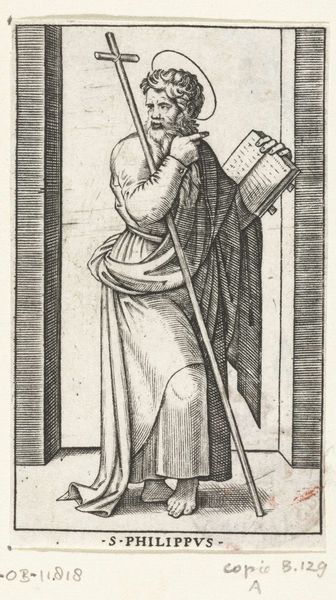
engraving
#
portrait
#
baroque
#
history-painting
#
engraving
Dimensions: height 146 mm, width 91 mm
Copyright: Rijks Museum: Open Domain
Editor: So, here we have "H. Gregorius van Utrecht," an engraving from somewhere between 1638 and 1708. It depicts a very dignified religious figure, maybe even imposing. There's so much detail packed into this small print! What stands out to you as you look at this work? Curator: Immediately, I am drawn to the visual vocabulary. Observe the radiant halo. Consider its potent, symbolic use over millennia across disparate cultures. Does it represent divine authority, or perhaps highlight Gregorius' saintly status within the Catholic tradition? Editor: It does feel like it marks him as special. I hadn't thought of the historical importance of something like that. Curator: And note how the Bishop is adorned in ornate vestments and holds a crosier, both potent signifiers of ecclesiastical power and status. These vestments—what messages might their very presence be communicating? Do they seem excessively elaborate, or appropriate for a figure of such perceived significance? Editor: It feels...intentional. Everything is so detailed, like it's trying to impress upon you something. It's interesting how the patterns on the cloak almost hide the figure underneath. Curator: Precisely. Is it about the individual or the *office* they occupy? Now, consider the technique. Engraving allows for remarkable precision, but how does the black and white medium influence the image’s impact? What emotions does the absence of color evoke in you? Editor: The lack of color makes it seem...stark. Very serious. I guess I assumed colour would make it more holy, maybe? Curator: Or would color distract from the gravity and symbolism? How might the very *lack* become a potent visual symbol in its own right? Food for thought. Editor: I’ll definitely be thinking about that next time I see an engraving! Thanks for showing me new ways of interpreting the images.
Comments
No comments
Be the first to comment and join the conversation on the ultimate creative platform.
